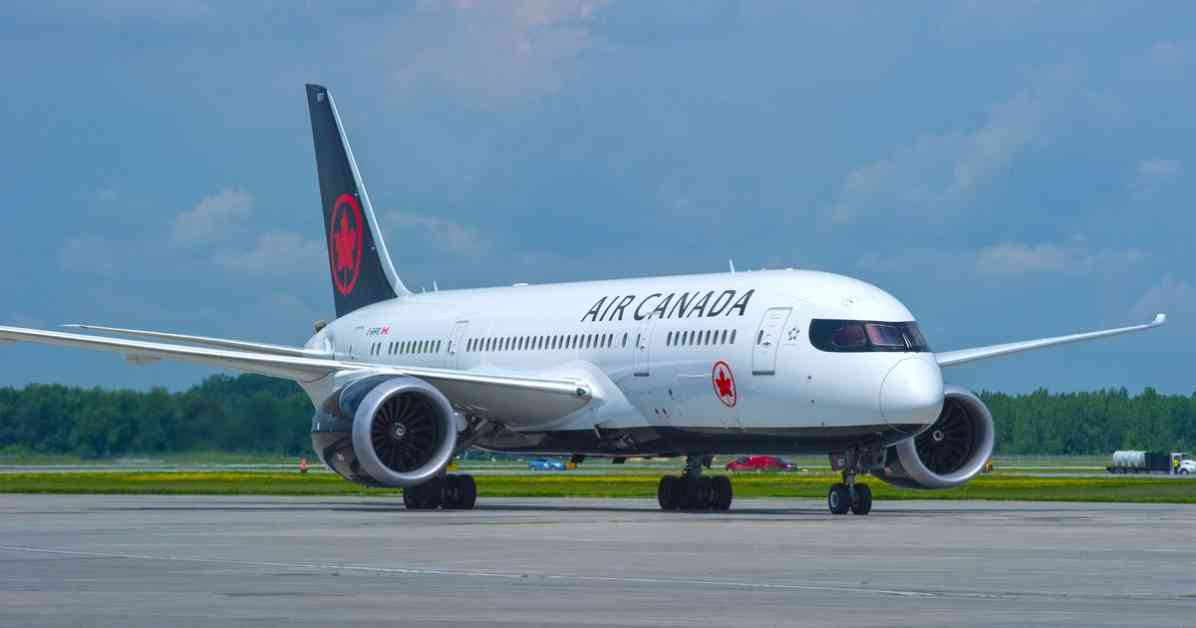Flight Makes Emergency Landing at Edinburgh Airport, Avoids Atlantic Crossing
A flight bound for Canada was forced to make an emergency landing at Edinburgh Airport after encountering a mid-air emergency. Air Canada flight AC843, which was en route from Frankfurt to Toronto, declared the emergency at approximately 7pm. The decision to divert the flight was made just before it was scheduled to cross the Atlantic Ocean, according to reports from the Daily Record.
Emergency Landing at Edinburgh Airport
Initially intended to divert to Glasgow, the flight ultimately touched down at Edinburgh Airport. Emergency services were on standby to assist the aircraft upon its arrival at the airport. The nature of the emergency that prompted the diversion remains unclear at this time. The flight is expected to resume its journey from Edinburgh at 8.30pm, as per flight radar information.
Air Canada Flight AC843 Emergency
Aviation Source provided further details on the emergency situation, stating, “In the last few moments, Air Canada flight AC843 between Frankfurt and Toronto has declared an emergency and is diverting to Glasgow.” The decision to divert the flight was made to avoid crossing the Atlantic Ocean due to the nature of the emergency onboard. The aircraft involved in the emergency is identified as C-GHKR, a 23.5-year-old Airbus A330-300 that was delivered to the airline in May 2001. The cause of the emergency has not been determined at this stage.
Impacts of the Emergency Landing
The emergency landing of Air Canada flight AC843 at Edinburgh Airport has caused disruptions to the flight schedule and inconveniences to passengers. The sudden diversion of the flight from its intended route to Toronto has led to delays and potential rebooking of travel arrangements. Passengers onboard the flight may experience a range of emotions, from relief at the safe landing to frustration over the unexpected change in plans.
Emergency Preparedness at Edinburgh Airport
The swift response of emergency services at Edinburgh Airport highlights the importance of preparedness for unforeseen circumstances in the aviation industry. The efficiency and effectiveness of the airport’s emergency protocols played a crucial role in ensuring the safety and well-being of passengers and crew onboard Air Canada flight AC843. Collaborative efforts between airport authorities, airlines, and emergency responders are essential in handling emergency situations with minimal impact on operations.
Lessons Learned from the Emergency Landing
The emergency landing of Air Canada flight AC843 serves as a reminder of the unpredictable nature of air travel and the importance of being prepared for emergencies. Airlines and aviation authorities must continuously review and update their emergency response procedures to ensure the safety of passengers and crew in challenging situations. The incident also underscores the resilience and professionalism of pilots and flight crew in managing crisis situations with composure and skill.
Assessing Safety Measures in Aviation
The incident involving Air Canada flight AC843 prompts a reevaluation of safety measures and protocols in the aviation industry. It raises questions about the effectiveness of emergency communication systems, crew training, and aircraft maintenance practices in ensuring the safe operation of flights. Aviation authorities and regulatory bodies may conduct thorough investigations into the circumstances surrounding the emergency landing to identify any lapses in safety procedures and implement corrective actions.
Passenger Reactions and Support Services
Following the emergency landing at Edinburgh Airport, passengers onboard Air Canada flight AC843 may require emotional support and assistance in coping with the aftermath of the incident. Airlines and airport authorities should provide necessary resources and services to address the needs of affected passengers, including counseling, rebooking options, and accommodation arrangements. Clear and timely communication with passengers is essential in managing their expectations and alleviating any concerns they may have.
Continued Monitoring and Updates
As the situation unfolds and more information becomes available, it is important for stakeholders in the aviation industry to monitor developments closely and provide updates to the public. Transparency and accountability in communication regarding the emergency landing of Air Canada flight AC843 are crucial in maintaining trust and confidence in the safety of air travel. Regular updates on the investigation findings, safety enhancements, and support services for passengers can help reassure the traveling public and address any lingering concerns.
In conclusion, the emergency landing of Air Canada flight AC843 at Edinburgh Airport underscores the importance of preparedness, collaboration, and resilience in the aviation sector. The incident serves as a reminder of the need for continuous improvement in safety measures and emergency response protocols to ensure the well-being of passengers and crew. By learning from this experience and implementing necessary changes, the aviation industry can enhance its ability to handle emergencies effectively and safeguard the integrity of air travel.













